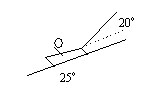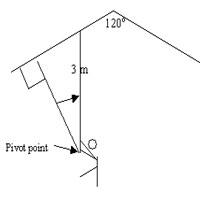|
Home
Project Evaluation
|
|||||||
1.1) Flour Power** Hal has bought some flour to bake his grandmother a cake. He starts up the stairs to her fourth floor apartment. Each flight is 10 vertical ft, and it takes Hal 15 s to climb each flight. Unfortunately, just as he starts to climb the stairs, the bag develops a small hole and by the time he has reached the top of the stairs he has only 3.2 lbs left.
1.2) Mental Labor* Physics students are frequently told that the mental labor involved in doing physics homework is not “real work” according to the physics definition. Let’s investigate how much work mental labor really involves. The average blood flow through the brain of a human adult is 12.5 mL/s, and its density is about the same as water. However, when you are doing a cerebrally intensive task, the rate of blood flow can increase by as much as 25% to supply your mind with the necessary oxygen. Assume a physics problem stretches your mind as much as possible and you require this maximum amount, and you spend 30 min working on it. If you tend to do your homework sitting upright, how much more work does your heart do pumping the blood to your brain while you are working on that problem than when you are just relaxing?
1.3) Hiking Pike’s Peak* Luisa and her friend Miguel have decided they want to hike up Pike’s Peak. Luisa has done some research and decided that they will go up the Barr Trail, then come part way back down and meet her dad at the Crags parking lot. The Barr Trail is 13 miles each direction with a vertical gain of about 7000 feet, and the trail back to the parking lot is about 6.5 miles and 4200 feet vertical. However, the path up contains numerous switchbacks that vary from very steep to completely flat. They also must work much harder to climb as they get up into the thinner air at higher altitudes. Luisa weighs about 140 lbs and Miguel weighs about 180 lbs, including equipment.
1.4) Sledding** Cory and his big sister Sam are going sledding. Sam is pulling the sled up the hill, when Cory jumps on it and asks her to give him a ride to the top. The mass of the sled when Cory is on it is 30 kg. The slope of hill is about 25o up from the horizontal, and it is about 6 m high. Sam pulls on the rope at an angle of 20o to the movement of the sled, as shown. The coefficient of friction between the sled and the snow is .1.
1.5) Painting a Ceiling***
|
|||||||
Posted on 8/1/05 © 2000-2005 Physics For Everyone. All Rights Reserved. |
|||||||


